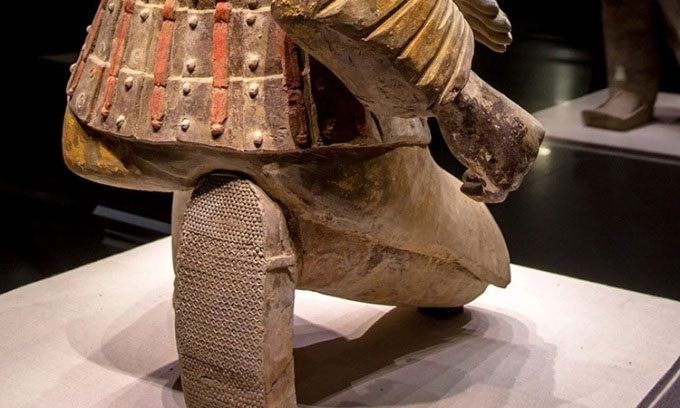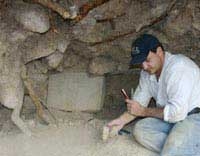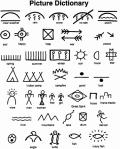The shoes on the feet of an archer in the Terracotta Army possess many superior features, exemplifying exceptional craftsmanship from the Qin Dynasty.
Fifty years after their discovery, the Terracotta Army of China is gradually revealing its secrets. Found accidentally by a group of farmers digging a well, these life-sized clay figures provide fascinating details about the soldiers of the Qin Dynasty, which unified China for the first time in 221 BC under the rule of Emperor Qin Shi Huang. Detailed examinations of the terracotta warriors in burial pits near the emperor’s tomb in northeastern Xi’an are helping researchers understand ancient life during the Qin Dynasty, from soldiers’ attire to their origins, according to BBC.

The sole of the terracotta warrior’s shoe. (Photo: BBC).
Shoes are not the first items to attract attention among the 2,200-year-old statues equipped with real weapons and arranged in military formation to protect Qin Shi Huang in the afterlife. However, preliminary analysis suggests that this modest accessory may have played a critical role in the Qin military, contributing to their record of victories.
Two Chinese researchers analyzed the shoes of a kneeling archer, the only terracotta warrior excavated so far with its shoe sole exposed. They then created a replica of the shoes using shoemaking techniques and materials that people in the Qin era utilized at the time the terracotta warriors were crafted. The study compared the reconstructed shoes with two modern pairs and found that the replica is extremely flexible and provides users with a more comfortable, stable, and efficient walking experience. The shoe sole also demonstrated better slip resistance in wet conditions.
According to Cha Na, a graduate student at the School of Materials Science and Engineering at Sichuan University in Chengdu, the shoe manufacturing process is unique with outstanding craftsmanship. What surprised Cha the most was that the shoe sole consists of multiple layers woven from mulberry tree fibers, glued, stitched, and tightly packed together. “Holding the modern replica of the shoes that a Qin soldier might have worn over 2,000 years ago, I am incredibly impressed by its intricacy,” Cha shared. “I can imagine the needle passing through the multiple layers of the shoe sole, forming neat stitches. The shoe sole is extremely soft and comfortable, easily bending.”
The shoe sole of the kneeling warrior is divided into three parts, each with a different number of stitching holes. The toe section has the most stitching holes, followed by the heel and the sole. This design is also reflected in the replica created by the research team. According to them, this detail is based on the user’s needs, aimed at providing comfort, support, and optimal durability. The absorbent material used in the heel also aids the soldiers in wet conditions. The slip-resistant shoes allow them to move securely across rugged terrain.
To date, researchers have excavated only about 2,000 terracotta warriors, although more statues are being discovered each year. It may take a long time to excavate all the warriors, according to Chinese archaeologists. They will continue to reveal new information about life in ancient Chinese society during the Qin Dynasty. Clearly, the skills and craftsmanship of those who created them are as impressive as the military strength that the army represents.





















































